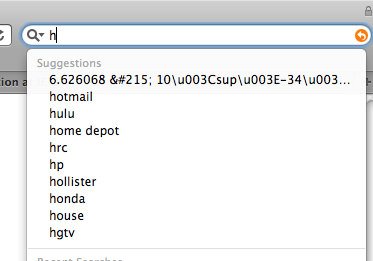Women in STEM, diversity in the workplace, problematic sexual or racial imagery at tech conferences: Not a week goes by without a discussion along these lines. There’s an aspect to the conversations for which I’d like to have a handy reference, because it often gets lost in the heat of the situation. This post is intended to fill the role.
Here’s a sample situation. Let’s say I’m looking over someone’s presentation slides and I’m seeing a male pronoun where both sexes apply (“the researcher then saves his data on his thumb drive…”), or an image of a female body used merely to create drama. I would point it out and suggest to reformulate or rethink. And often enough, since my interlocutor is more likely to be clueless than a raging misogynist (after all, they’re asking me for advice!), the reaction is embarrassment: “I didn’t know this is offensive,” or even “I didn’t mean to offend you, sorry!”
There are two things I want to say at this juncture. The first is that I’m unlikely to be actually offended. Certainly not about a thoughtless pronoun, and believe me, I’ve seen erotic images before. These days it takes a lot to make me uncomfortable. Sure, it does happen, a few times a year, when some idiocy feels like a punch to the stomach. It would be more frequent if I hung out more in certain corners of the tech world (keyword “gamergate”). But my personal threshold is irrelevant here, and in any event, don’t presume you know someone else’s feelings.
Second, your goal shouldn’t be to avoid offence under all circumstances: it should be to consider what signals you’re setting, and what these signals say about you and the community you’re addressing. Do they say “my peers may be male or female, and my pronoun choice reflects that” and “stereotyping and objectification do not reflect an acceptable way of relating to each other in this community”? Or do they say “people from underrepresented groups will occasionally have to put up with being the butt of jokes or be forgotten in our planning, because we historically didn’t have to think of such trivial matters”?
I would even go so far as to say giving offence is sometimes inevitable. The racist reader of Houstonia Magazine who called in to complain about an ad because he “just can’t go for racial mixing” quite likely feels genuinely offended at the sight of a picture of a mixed-race family. Similarly, the homophobe may feel sincere discomfort at the sight of two men kissing. And I remember discussions during my youth when it was considered quite reasonable for a man to feel uncomfortable about reporting to a female boss, and an unfortunate fact of life that women who want careers would have the extra task of dealing with such obstacles. In all three cases my attitude, and surely not just mine, is to put the onus firmly back onto the racist reader, homophobic neighbour or sexist employee to a) put up with it and b) use it as an opportunity to examine their prejudices and biases.
I’m not making the moral relativist’s argument here: quite on the contrary. Feeling offended at sexist jokes is not equivalent to being offended about women having access to roles of authority. The hurt feelings of the racist don’t have the same weight as as the hurt feelings of a non-white person who has to prove their competence multiple times all over. As for our professional (or recreational) communities, we cannot resolve an ethical problem (equality of opportunity) without making a commitment to a set of values about diversity and inclusiveness, even if it means the traditionalists have to adapt.
The problem I’m interested here is offending someone or making someone uncomfortable merely for not being part of the majority group, in a situation where they could reasonably expect to be free of discomfort and treated with professional courtesy. When I say “ugh, this is really offensive” this is usually what is meant.
You might think I’m stating something that everyone implicitly understands. But I still think it’s important to be clear and precise about the distinction, for a number of reasons.
1. To counter a dismissive “she just takes offence easily”. Sure, some people take offence more easily than others. People vary. Some even take offence based on a misunderstanding. It happens. But it’s irrelevant. A point stands whether the person highlighting it speaks with perfect calm and detachment or with visible pain and anger.
2. Because otherwise the problem may be relegated to an inter-personal matter even though it is about systems and communities. It’s not about avoiding to step on someone’s toes, but about who is made feel welcome and who is being excluded or pushed to the margins.
3. Because the focus on offence seeks simple formulaic solutions to ethical problems. We can’t make our communities inclusive by box-ticking. Removing some symbols of discrimination (such as sexualized images) doesn’t automatically make peers consider each other’s contributions fairly.
4. Because offence and discomfort cut many ways. Already we’re seeing attempts to borrow the language of diversity and inclusion to remove challenging literature from school curricula or material about sex and sexuality from youth sections of libraries, or to justify restrictive dress codes. There is no contradiction between rejecting eroticised images on presentation slides and wanting libraries to offer factual, complete information about the anatomy of human bodies and the biological, social and psychological aspects of sex.
To finish, lest it seem I’m slamming the use “offensive” without further qualification: Even though there’s no right not to be offended, offence and discomfort are still symptoms of a problem. It’s not hypocritical to complain about it. Simply, when examining one’s own values and biases, or when writing, say, a code of conduct for a community, it’s a good idea to figure out what exactly is the kind of inclusiveness and freedom of offence we want to achieve.


